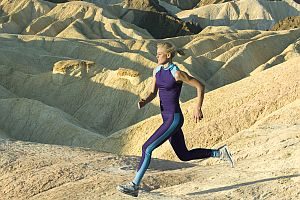Chiropractic Safer than Medical Care for Elderly
 Many studies have found that chiropractic care is a safe and effective treatment method when dealing with a number of spine-related issues. The American Chiropractic Association even lists a number of research studies on their website that show that it is a valuable treatment method for easing (and sometimes completely resolving) back pain, neck pain, headaches, and more.
Many studies have found that chiropractic care is a safe and effective treatment method when dealing with a number of spine-related issues. The American Chiropractic Association even lists a number of research studies on their website that show that it is a valuable treatment method for easing (and sometimes completely resolving) back pain, neck pain, headaches, and more.
While all of this is good news for professionals that practice in the chiropractic field, some researchers wondered if chiropractic was just as safe for elderly patients as it is for younger patients experiencing these types of problems. So, they set out to find the answer, which they did via a retrospective cohort study funded by NIH and the National Center for Complementary and Alternative Medicine, and also which was subsequently printed in Spine upon its completion.
What researchers wanted to discover was whether the relationship between the risk of injury to people 66 years old and older when engaging in chiropractic care was higher than, lower than, or equal to the risk of injury to this same age group after undergoing medical care by their primary care physician. To find their answer, they studied data on Medicare B patients who went to the doctor in 2007 for a neuromusculoskeletal issue, evaluating their risk of injury seven days post-treatment.
They discovered that seniors that received chiropractic care had a 76% lower rate of injury within seven days of treatment when compared to the subjects that met with their primary physician as a result of a neuromusculoskeletal complaint. Researchers also pointed out that they found that males contained within the research group, older study participants, and those with a higher Charlson co-morbidity score were most at risk of injury within the week after acquiring a neuromusculoskeletal issue.
Additionally, certain medical conditions raised the risk of injury, even after chiropractic care. Therefore, chiropractic professionals should consider whether treatment via spinal manipulation is best for “patients with coagulation defects, inflammatory spondylopathy, osteoporosis, aortic aneurysm & dissection, or [those who have engaged in] long term use of anticoagulant therapy” as the increased risk may not be worth the benefits.
Whedon JM, Mackenzie TA, Phillips RB, Lurie JD. Risk of traumatic injury associated with chiropractic spinal manipulation. Spine 2014;Dec 9.
 There is no medical definition for a “superfood”. Food manufacturers are eager to use the word to promote sales of their products that contain traces of supposed superfoods such as blueberries, pomegranates and chocolate. The Oxford English Dictionary defines a superfood as “a nutrient-rich food considered to be especially beneficial for health and well-being.” However, there are no set criteria about what makes a food nutrient-rich. Most superfoods are high in antioxidants and phytonutrients relative to other foods. However, if you were to eat only one of these superfoods to the exclusion of all else, you would be seriously deficient in many of the nutrients your body needs in order to stay healthy. So what exactly is the science behind the idea of superfoods?
There is no medical definition for a “superfood”. Food manufacturers are eager to use the word to promote sales of their products that contain traces of supposed superfoods such as blueberries, pomegranates and chocolate. The Oxford English Dictionary defines a superfood as “a nutrient-rich food considered to be especially beneficial for health and well-being.” However, there are no set criteria about what makes a food nutrient-rich. Most superfoods are high in antioxidants and phytonutrients relative to other foods. However, if you were to eat only one of these superfoods to the exclusion of all else, you would be seriously deficient in many of the nutrients your body needs in order to stay healthy. So what exactly is the science behind the idea of superfoods?




 Why “low impact” cardio exercises? Imagine reaching your “golden years” with a buff beach body only to be told that you can’t jog or run anymore because your knee cartilage has been worn thin or you have damaged vertebrae. The last thing you want to do is ruin your body while trying to stay in shape. Here we present some good low impact cardio exercises that can help you maintain a healthy cardiovascular system without causing damage to your musculoskeletal system.
Why “low impact” cardio exercises? Imagine reaching your “golden years” with a buff beach body only to be told that you can’t jog or run anymore because your knee cartilage has been worn thin or you have damaged vertebrae. The last thing you want to do is ruin your body while trying to stay in shape. Here we present some good low impact cardio exercises that can help you maintain a healthy cardiovascular system without causing damage to your musculoskeletal system.
 Forming new habits can be just as difficult as breaking old ones. But when you stop to think about it for a moment, it is clear that all of our habits, both positive and negative, had a beginning—a time BEFORE the behavior became a clear, recognizable pattern. In other words, there was a time when your current habits weren’t yet habits at all!
Forming new habits can be just as difficult as breaking old ones. But when you stop to think about it for a moment, it is clear that all of our habits, both positive and negative, had a beginning—a time BEFORE the behavior became a clear, recognizable pattern. In other words, there was a time when your current habits weren’t yet habits at all!